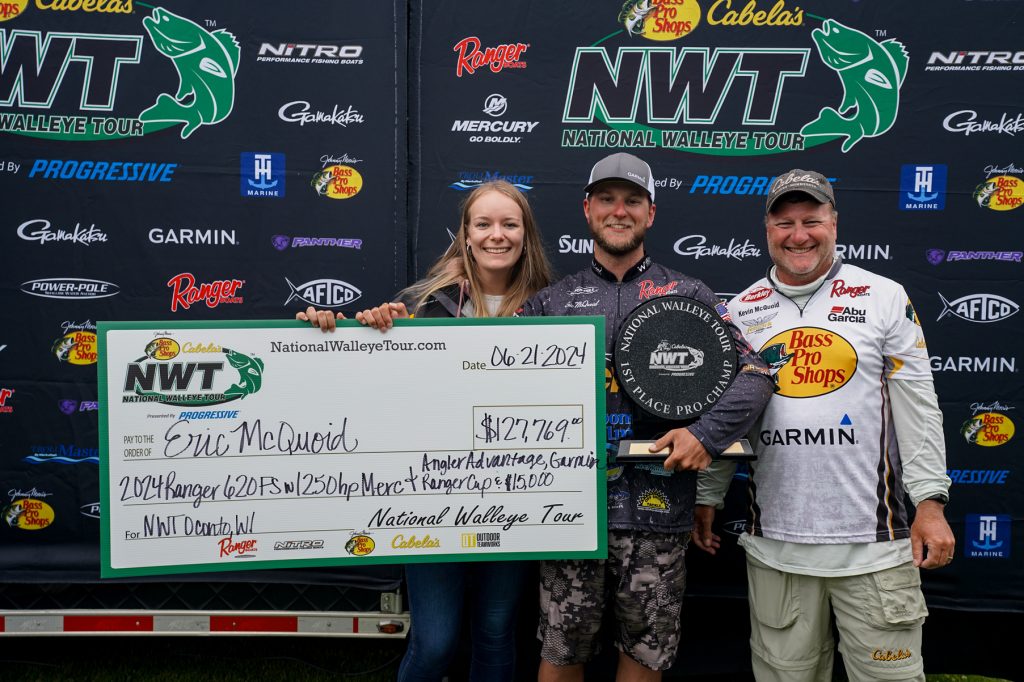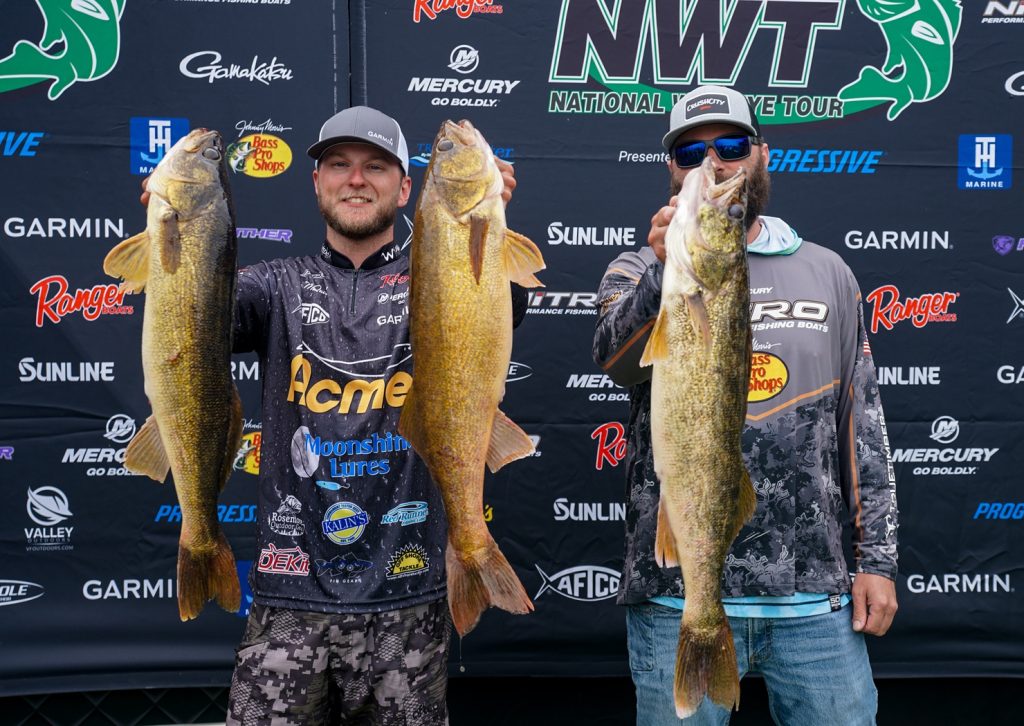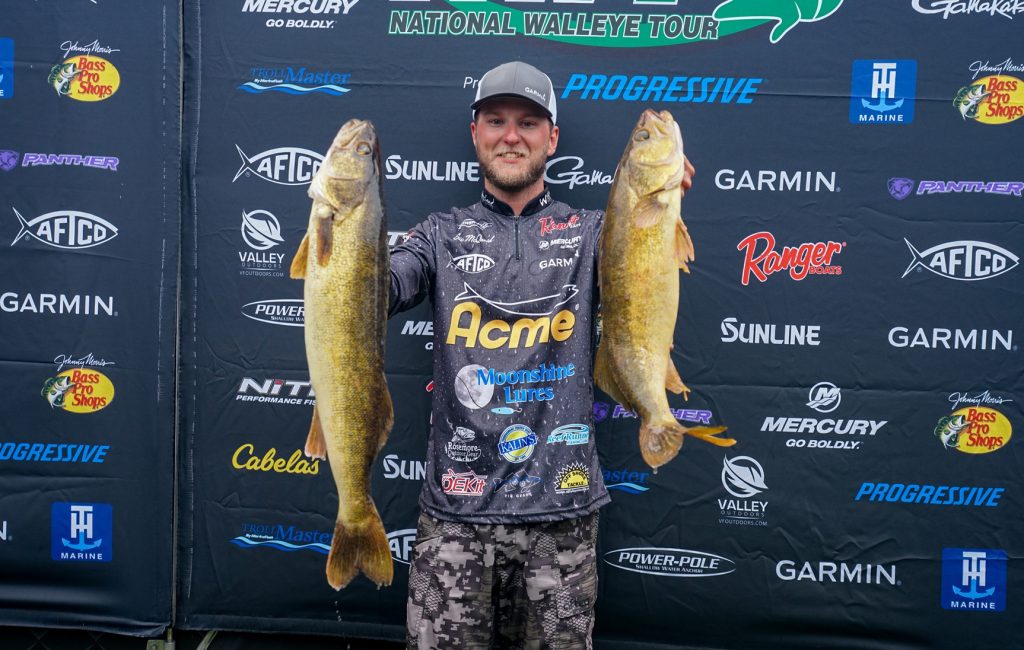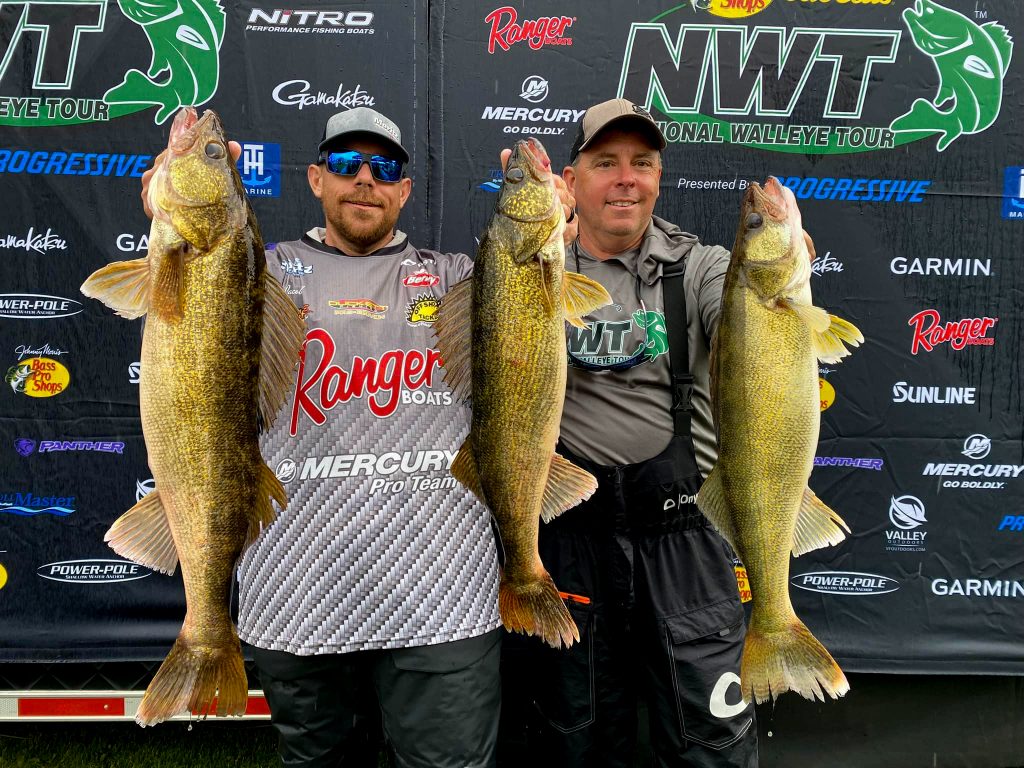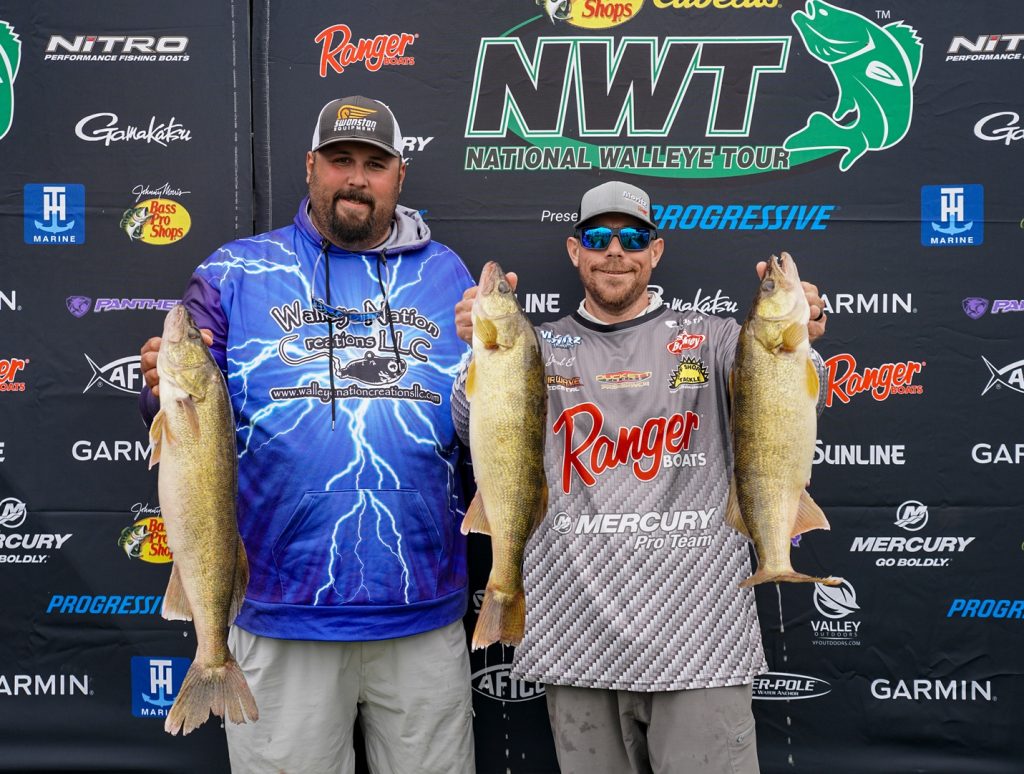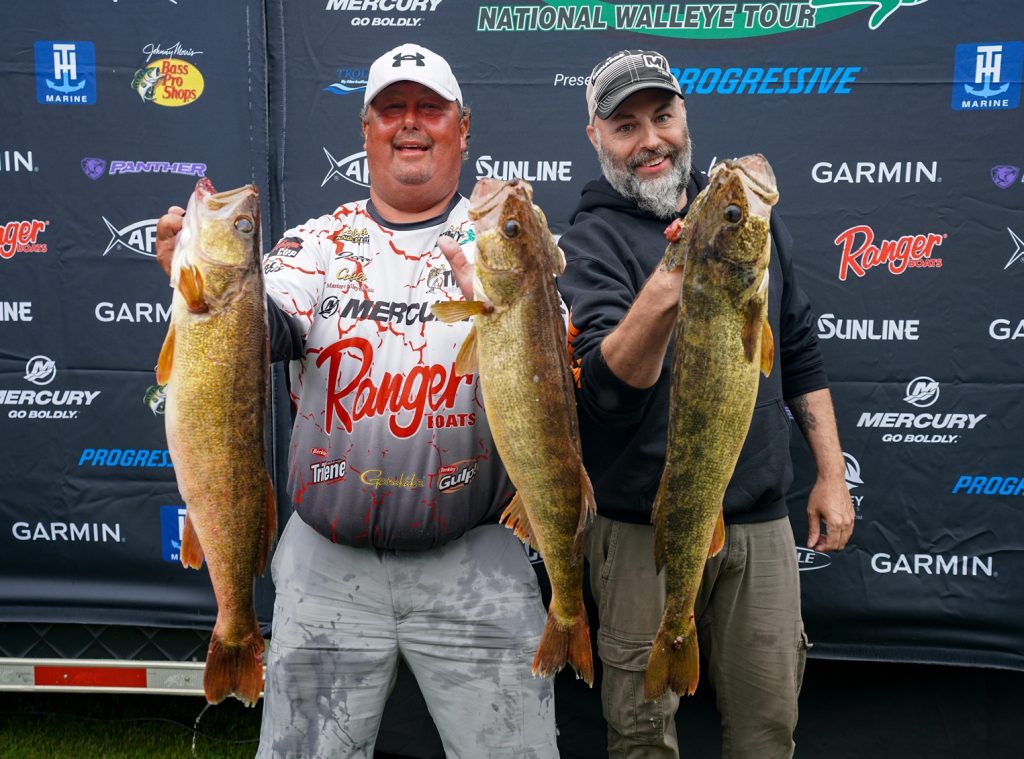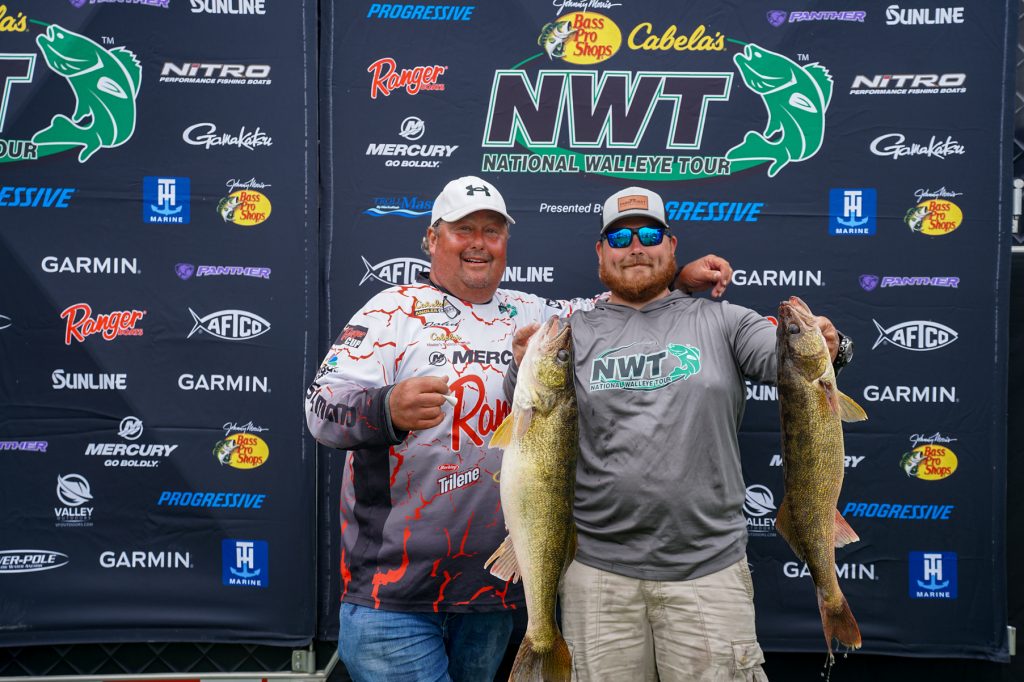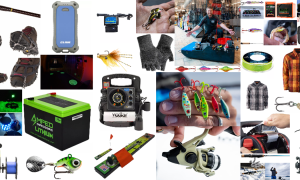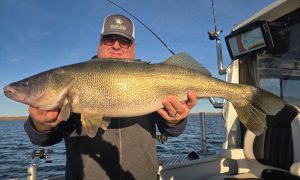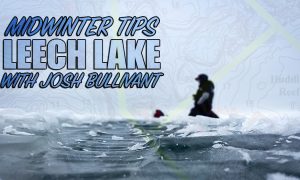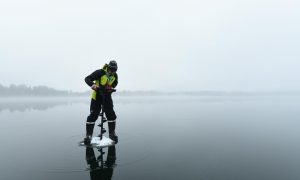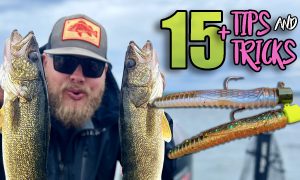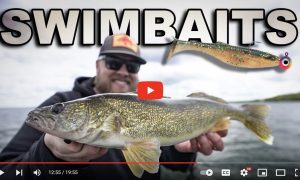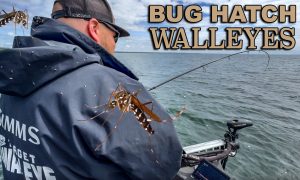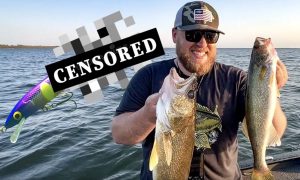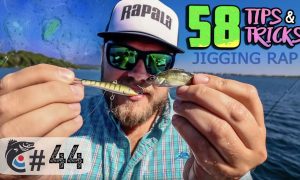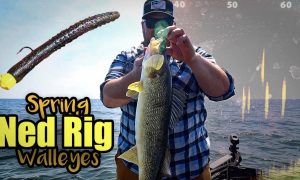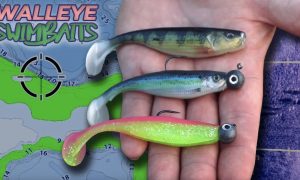There almost never seems to be any info out there talking specifically how the best walleye pros in the world get it done on game day…. 🤷♂️
Usually we’re lucky just to get one little line such as: So and so “won trolling crankbaits.” Or so and so “caught their fish on a jig.” Cool, thanks? I’ll have to try that 🥴 LOL.
So we decided to have Target Walleye friend Brett Carlson (thx man!) track down the ‘Full Scoop’ on how the top-3 pros at the Green Bay NWT caught ’em better than the rest – here we go!
Red-hot McQuoid casts for Green Bay gold
Lake Michigan’s Green Bay has long been known as the premier big-fish factory in the Midwest. This reputation was only enhanced in 2014 when legendary Wisconsin walleye anglers Keith Kavajecz and Gary Parsons introduced the concept of casting over Great Lakes structure. Fast forward 10 years and forward-facing sonar has enabled anglers to target specific fish, whether they’re positioned on structure or not. All these advancements should, in theory, make the fishing on Green Bay easy. In reality, the season’s third National Walleye Tour event was anything but.
Many factors contributed to a difficult bite, but chief among them was the alewife spawn, which provided the Green Bay walleyes with a continuous all-you-can-eat buffet. Even when walleyes were caught, a 3-fish limit combined with a no-cull rule made decisions excruciatingly difficult. For red-hot Eric McQuoid, both the bite and the decisions looked easy.
The McQuoid family has a long history in the annals of tournament walleye fishing. Eric’s father, Kevin, has been a consistent performer for decades, and his mother, Karen, has held her own as a team partner on the MWC. But Eric stole the spotlight in 2021 when he became the youngest NWT Championship winner ever. The younger McQuoid was one of the early adopters of forward-facing sonar, and he’s been near the top of the standings ever since. Earlier this month, he won the AIM National Championship with partner Kolton Krawiecki on Lake Sakakawea. McQuoid grew up on the southeast corner of Mille Lacs Lake as Kevin and Karen used to own McQuoid’s Inn. While mom and dad still live in Isle, MN Eric moved to Kewaunee, WI to chase his girlfriend and the giant Green Bay walleyes.
“Coming in, I knew it was going to be tough,” said the 24-year-old Acme pro. “I found a decent bite up in Big Bay and making the long run north was the original plan.”
Late in practice, he decided to reinvestigate some closer spots on the eastern shore in the Door County area. When the wind unexpectedly kicked up Thursday morning, he audibled away from Big Bay and headed closer to his new home.
“We ran roughly 30 miles, and it still took us almost an hour. Within 10 minutes of fishing the first morning, I lost an 8-lber. About 45 minutes later, my co-angler caught a 7-lber. Then I ran a bit to my second spot and caught a 7-lber. Just before 1 pm, I caught a 9-lber and that was it. In the end, it was actually a good thing that I lost that early 8-lber…I probably gained a pound or so.”
On day 2, McQuoid started the day in 3rd place, chasing his father and renowned Green Bay stick Danny Woodke.
“We were nervous coming in because the wind helps that east side bite, and it was calm. Sure enough, the first three spots didn’t produce. The alewives moved back in, and the fish weren’t there. Then we moved to the spot that produced our last two fish from the first day. I caught a 7- or 8-lber there, and then we just bounced around on the east shore, trying to fish fast and find spots with fewer alewives.
“The rain started in the afternoon, so I went across the flat to a reef where I had marked fish earlier. The rain helped so that the fish didn’t hear my bait hit the water. At 1:45 pm, I caught a 4.5- or 5-lber, which immediately went in. Before that, I was starting to get in panic mode. We were supposed to head back at 2:20, and at 2:10, I caught my last fish, a 29-incher. I didn’t know I had won at that point, but I knew there was going to be a chance.”
“We only caught 6 fish in the 2 tournament days, so we never had to make any difficult decisions. Before the tournament, my plan was to keep anything 6 pounds or bigger.”
McQuoid caught both suspended fish and walleyes positioned near rock structure.
“Four of the fish I weighed came up suspended. I was fishing anywhere from 6’ to 20’ of water. The one my co-angler caught the first day was sitting next to a giant boulder, and I caught another one sitting just inside the rocks on the bottom.”
When he checked earlier in practice, these same spots didn’t have fish. But slowly, the alewives started moving out as the water continues to warm.
“I think the fish we caught were the first wave of migration.”
McQuoid primarily used a 3/8-oz Kalin’s Google Eye Hair Jig (purple) with a stinger hook. Two of his weigh fish were caught on a Kalin’s Pendu Jig (1/8 or 3/8) threaded with a full crawler.
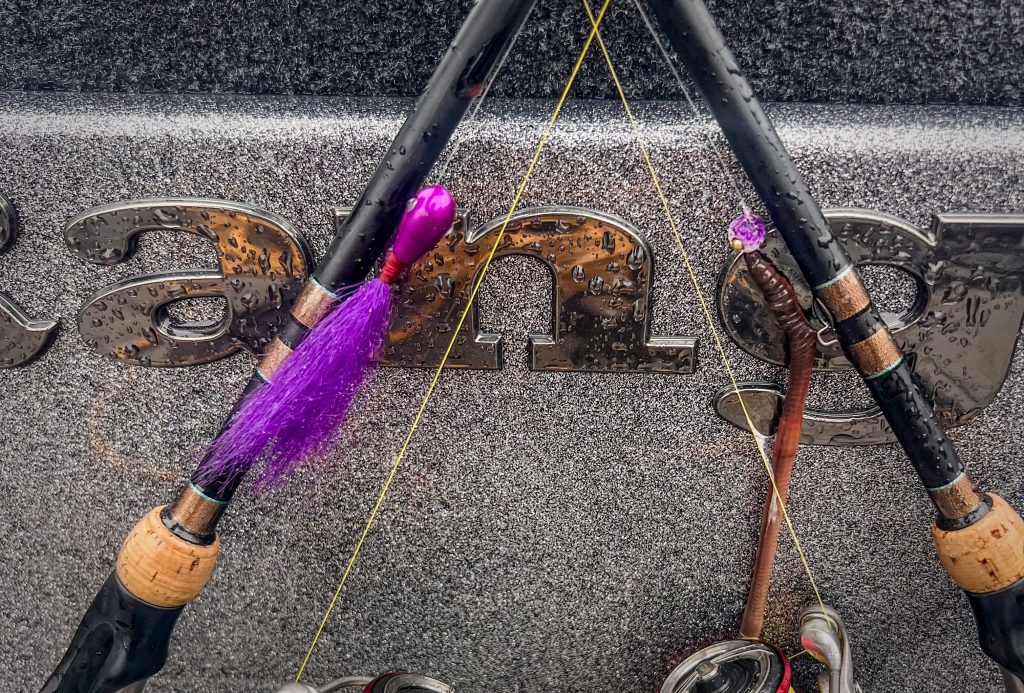
“They were not aggressive enough for bigger hard baits. I was hopping the hair jig up and down – trying to mimic an alewife or some bait dying. When I couldn’t get a reaction from the hair, I just wanted to slow it down and go old-school finesse with a jig and crawler. The first day I saw a lot more walleyes. Even though I only caught those three fish, I had probably 20 chase it to the bottom but not eat. The second day the alewives sort of moved back in, and I saw only 10 walleyes all day long.”
McQuoid fished both presentations on a 7’ medium light “Double L” Rosemore spinning rod. He employed 15-lb Berkley Fireline (flame green) with a 12-lb Trilene 100% Fluorocarbon leader. Not surprisingly, LiveScope, and the detail it provides, proved to be the key.
“LiveScope allowed me to find the bigger walleyes that were mixed in with the sheepshead and everything else. That makes you so much more efficient. I had my LiveScope set out at 100, and I would make the first cast at 90’. Not many bites were coming close to the boat. Most were hitting it in that 40’ to 70’ range. The fish, especially in clear water, are so aware of us, you can even see the difference when your trolling motor is on 8 or 9 versus 3 or 4.”
McQuoid, who co-owns DEKit Wisconsin with Drake Herd, finished with a 2-day total of 43 lbs 14 oz. He also sits 2nd in the Angler of the Year race as he returns to Sakakawea for the fourth NWT qualifier.
“I’m not trying to brag, but I had a good feeling coming into this one. I’m surprised I won, but when you’re hot, you try and ride that momentum. It was a lot of fun chasing Dad and Danny (Woodke), and it was fun to have them on stage there at the end. I’m definitely excited to go back to Sakakawea. There’s so many big fish in the system – it’s going to be a shootout.”
2nd-place Ell plays in mud
After sampling the West Shore with limited success, Jacob Ell started focusing his efforts on the lower bay mud, a well-known area located 10 to 12 miles south of Oconto, somewhat near the Brown County line. The bites were limited, but the size was better than expected.
“When we were up north on the West Shore, there were so many more dead alewives on the surface,” explained Ell. “I’m talking freshly dead alewives. When we went down to the mud, we noticed a lot of baitfish down on the bottom in the mud and some fish just sitting higher up.”
Ell continued to fine tune his mud program during Monday and Tuesday’s practice.
“It was a fun, but grueling program, where you’d only get 3 to 5 bites per day. There’s a good population of walleyes still down there. It’s currently in transition where the water is warming up and the fish are pulling out of the lower bay. I think we’re just at the very front edge of that. When the mud is really going, half the field is out there. We were just out front of that.”
After arriving, Ell would try to find the highest baitfish concentration, and then look for walleyes in the upper part of the water column.
“I would say only 2% of the walleyes would actually be interested in biting. We had countless fish chase a bait. Some would turn and investigate – some would get close and then shy away. It took a combination of the right fish and then the right cast. When all the pieces of the puzzle lined up, you’d cast it right over the top of their head. You’d almost spook them, and then they’d turn around and hit it.”
Ell had his ActiveTarget ranged at 90’ out. He would see the fish at 70’ and 80’ and would start casting about 65’ away.
“Once they got within 20’ of the boat, they were shying away. The water was 25’ to 30’, but the fish were suspended above the bait in 4’ to 10’.”
The Bismarck, ND pro said he used either a 1/8- or 1/4-oz Berkley Half Head Jig with 3/4 of a nightcrawler threaded up. He threw the jigs on a 7’ medium light Duckett Walleye Series spinning rod with a Pflueger President XT reel. His line of choice was 10-lb Berkley Fireline (flame green) with a 10-lb Trilene 100% Fluorocarbon leader.
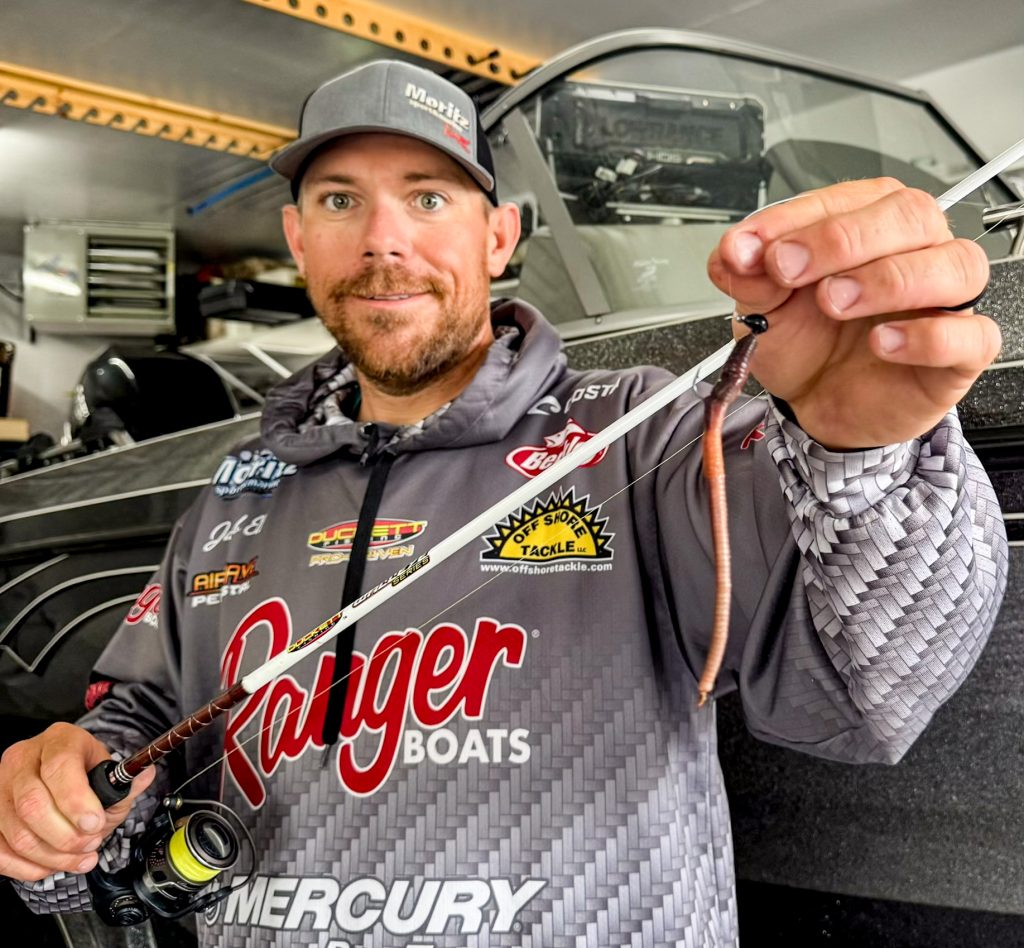
“The key for me was casting and immediately quivering the rod so that the crawler was dancing above them. You had to get their attention and get them to react before it got too close to the boat. It was like they didn’t want to work that hard for their meal. And that makes sense because they didn’t have to. These were fish that were just hanging out above the baitfish. These higher ones would actually stay still where you could cast out there once or twice. It was always singles and doubles too. If there were pods of 3, 4, or 5 fish, they would not react to the bait. They would shy away immediately.”
Ell finished the event with 42 lbs 2 oz – slightly improving his weight the second day. At 1:45 on day 2, he boxed a 4.5-lber, which secured 2nd place, but also ensured he couldn’t catch McQuoid.
“I stubbed my toe at Erie, so I needed a good tournament here for AOY points. I took 2nd, and it feels good – it feels really good. Yes, I ended up coming in an hour early, but I also went hours with no bites. Even knowing what I know now, I think I would have made the same decision.”
Kopcok rallies again, finishes 3rd
Multispecies Canadian angler John Kopcok is quietly putting together an impressive season. At Red Wing, he caught the heaviest stringer of the entire tournament on the second day and rallied to 4th place. At Green Bay, he would have won had he kept 1 more fish pinned. Still, he caught the heaviest stringer from day 2 and finished 3rd with 5 walleyes that weighed 40 lbs 7 oz.
“During practice I tried all the normal spots, but it wasn’t happening, so I kept making my way north,” said the jovial pro. “I finally found a great area up in Big Bay that fished just like home.”
Kopcok traveled 95 miles north of Oconto. On day 1, in blustery weather, it took him 2 hours and 45 minutes. Initially, he was trolling the area, but as he learned more, he discovered the walleyes were sitting inside little patches of cabbage. Floating on top were mayflies.
“The perch were there eating the mayflies, and the walleyes were there to eat the little perch. The weeds were sparse enough where you could cast in them, but if you trolled, you would foul up. If you could find a group of 2 or 3 fish cruising together, they were much more likely to bite.”
The water was 22-25’, and the cabbage would top out to the surface. In spots, gobies were also spawning on the bottom.
“The best parts were 8’ and up. I would drop it eye level – almost on their nose. You had to make them mad.”
Kopcok used three different baits – typically starting with a 1/2-oz Walleye Nation Creations Death Jig (perch or gold color) with a half crawler. If that didn’t work, he would mix in either a 1/2-oz purple hair jig (custom by Dan Harper) with a stinger hook or a 3/16-oz Tactical Fishing jig (chartreuse – custom paint by Matt Leben) with a half crawler. Kopcok had his forward-facing sonar set at 85’, and he said all his bites came in the 50’ to 80’ range.
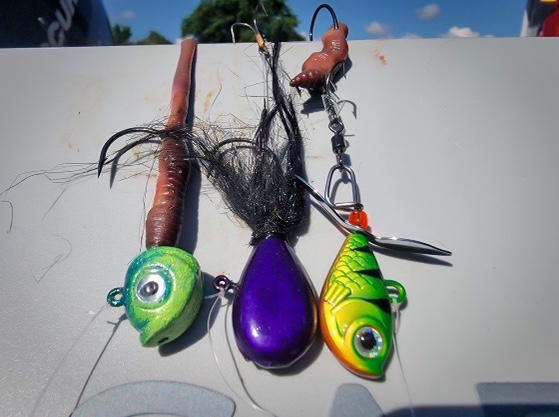
“I’m disappointed with 3rd – I expected 1st. When I caught those fish in prefishing, I knew I was on the right ones. Two times the first day I had my third fish on, but then they’d shake their head and the jig came off. I got 4th in Red Wing, 3rd here, so I guess I’m going to take 2nd at Sakakawea and then win the championship. I guess I got the bronze medal for Canada at this one.”

